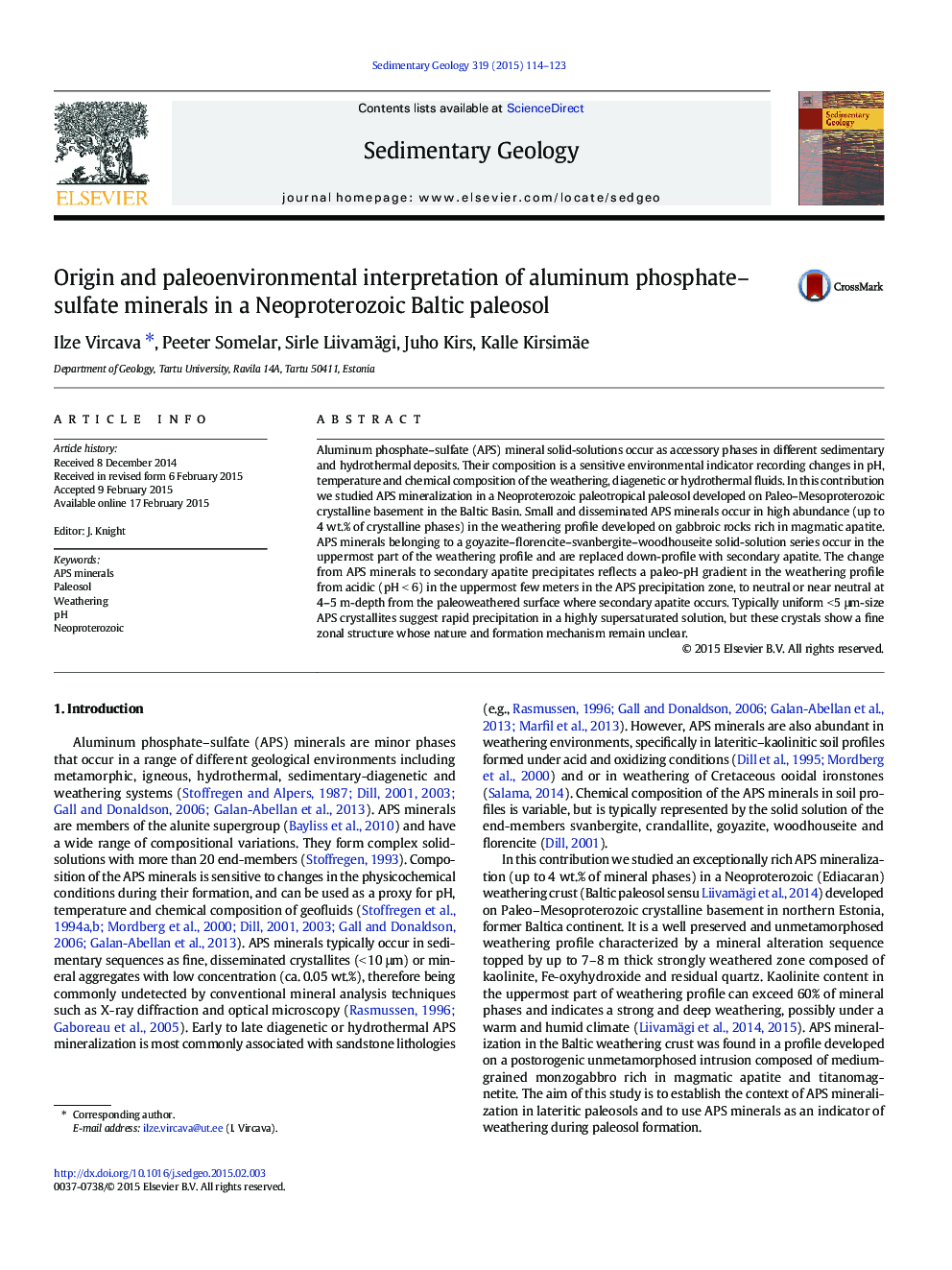| Article ID | Journal | Published Year | Pages | File Type |
|---|---|---|---|---|
| 4689324 | Sedimentary Geology | 2015 | 10 Pages |
Abstract
Aluminum phosphate-sulfate (APS) mineral solid-solutions occur as accessory phases in different sedimentary and hydrothermal deposits. Their composition is a sensitive environmental indicator recording changes in pH, temperature and chemical composition of the weathering, diagenetic or hydrothermal fluids. In this contribution we studied APS mineralization in a Neoproterozoic paleotropical paleosol developed on Paleo-Mesoproterozoic crystalline basement in the Baltic Basin. Small and disseminated APS minerals occur in high abundance (up to 4 wt.% of crystalline phases) in the weathering profile developed on gabbroic rocks rich in magmatic apatite. APS minerals belonging to a goyazite-florencite-svanbergite-woodhouseite solid-solution series occur in the uppermost part of the weathering profile and are replaced down-profile with secondary apatite. The change from APS minerals to secondary apatite precipitates reflects a paleo-pH gradient in the weathering profile from acidic (pH < 6) in the uppermost few meters in the APS precipitation zone, to neutral or near neutral at 4-5 m-depth from the paleoweathered surface where secondary apatite occurs. Typically uniform < 5 μm-size APS crystallites suggest rapid precipitation in a highly supersaturated solution, but these crystals show a fine zonal structure whose nature and formation mechanism remain unclear.
Keywords
Related Topics
Physical Sciences and Engineering
Earth and Planetary Sciences
Earth-Surface Processes
Authors
Ilze Vircava, Peeter Somelar, Sirle Liivamägi, Juho Kirs, Kalle Kirsimäe,
